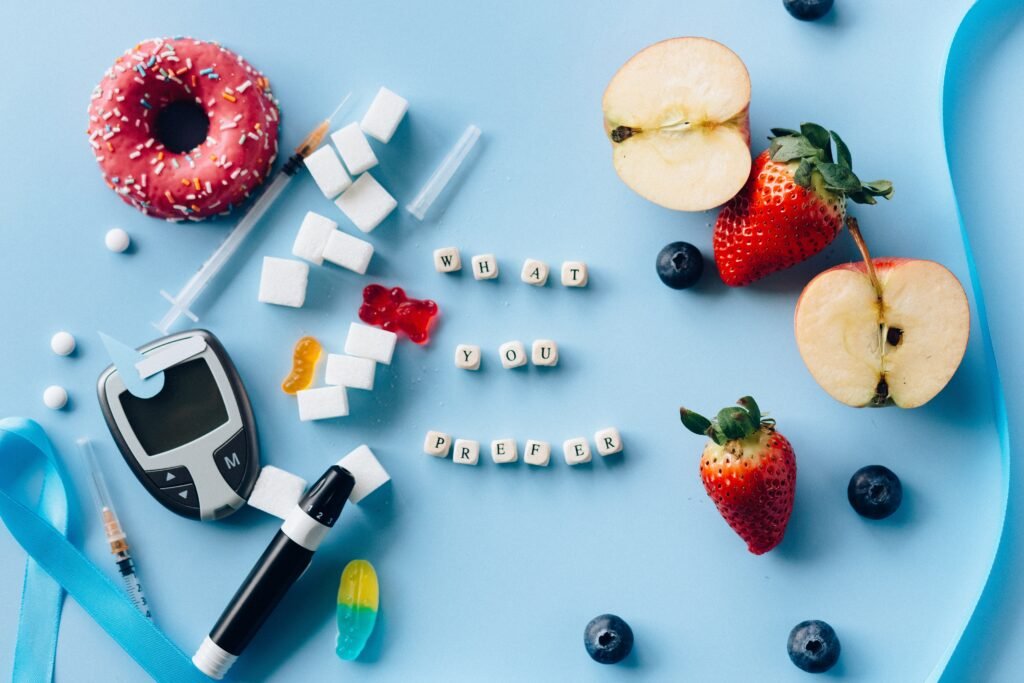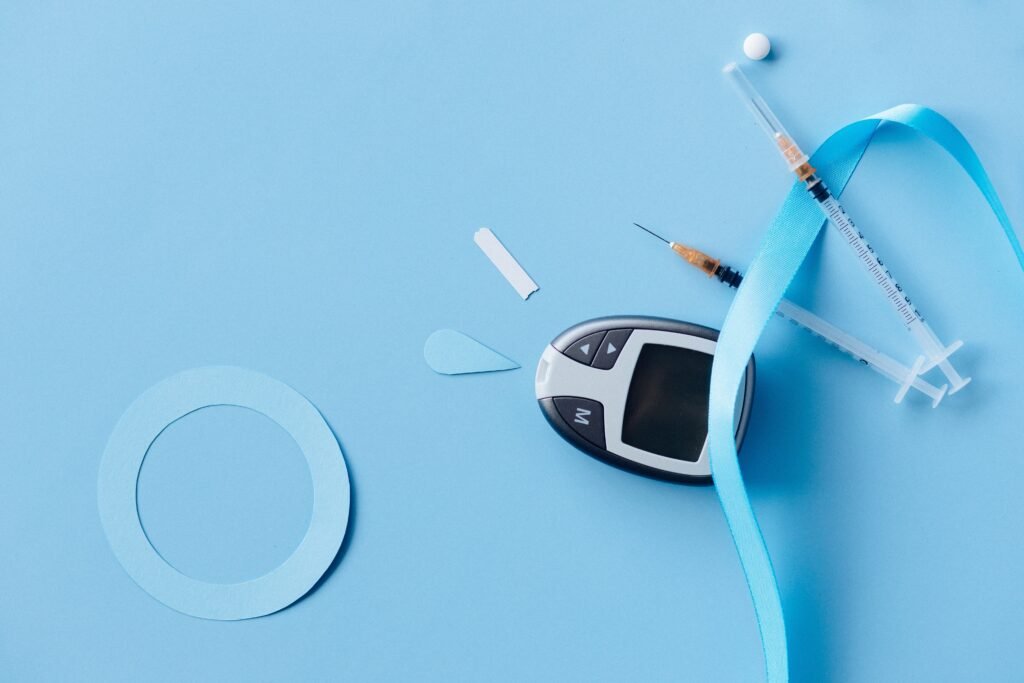How to Control Your Blood Glucose?
A decrease in blood glucose is called hypoglycemia, while an increase in blood glucose levels is called hyperglycemia. Both these conditions are mostly chronic and are associated with an underlying condition called Diabetes. Controlling blood glucose involves finding ways that indeed keep a check on your blood glucose levels.
If you are diagnosed with Diabetes, then first consider using a glucometer. The best option is to use a continuous glucose monitor to monitor your blood glucose levels while trying different diet plans, lifestyle, and physical changes. This evaluation will help your doctor get on a project that works best for you and can prescribe medicines that suit you. Let’s discuss this in detail.

1) Monitor your blood glucose levels routinely
One way is to use a classic glucometer to check your blood glucose by finger pricking. For details on how to use a glucometer, please visit my page, “how to check blood glucose at home.”
Another effective way of getting body glucose levels is using continuous glucose monitors (CGM), which do not require finger pricking. This technology allows people with diabetes and healthcare professionals to monitor glucose readings continuously on a receiving device. That allows analysis and possibly finding more accurate treatment decisions.
Keep track of your blood glucose readings.
Keep track of your results with an app or pen and paper to figure out how to control your blood sugar levels. When you have doctor’s appointments, also bring them to the doctor’s office with you. After seeing your track, the doctor may recommend oral medication or insulin injections, depending on your situation.
Oral medication
Oral medications are the first choice for treating type 1 and type 2 diabetes, but people with severe type 1 diabetes may take insulin in addition to oral medications. But they all help lower blood sugar levels overall.
Insulin injections
Many people with Diabetes, whether type 1 or type 2, need to be treated with long-acting insulin. Patients take two daily insulin injections to provide them with regular insulin throughout the day. Don’t forget to continue visiting your doctor to decide whether you still need insulin or changing insulin dosage.
Note: If you’re on insulin, the first thing to do in the morning is to monitor your blood sugar before breakfast. You do not want to give yourself insulin if your blood sugar level is too low.

2) Choose good nutrition to control blood glucose
Good health comes from good nutrition, and no pill or medication can replace the goodness of taking good food to control blood sugar.
Fulfill your daily carbohydrate needs
If you don’t eat the proper amount of carbohydrates, your blood glucose shoots too high. And if you’re on glucose control medications, it may drop to dangerously low levels. So, talk to your doctor about your carbohydrate needs to keep your blood sugar levels high enough and give your body energy. A recommended carbohydrate intake per meal is 30 to 45 grams for diabetic women and 45 to 60 grams for diabetic men.
Measure out food to determine servings
Most people are unaware of how much they eat, which causes weight gain. So it’s recommended to measure your food to know the core amount of carbohydrates you consume.
Read food labels to determine the carbohydrate level.
They will tell you how many carbs are in a particular food, so you don’t have to guess
Skip white from the diet
You have to avoid white – nutrient-less, high-starch, and high-sugar foods. It eliminates all white foods and, more precisely, white refined sugar and flour, which can increase your blood sugar level and cause weight gain. So it is better to choose whole grains over refined grains to help control your blood sugar.

![]()
Balance your meals with protein and vegetables.
Eating balanced meals helps in controlling your blood sugar levels. So when planning your meals, choose a balance of protein, fruits, vegetables, starches, and fats.
Eating breakfast an hour and a half to two hours after waking up and then eating balanced meals every 3-4 hours with snacks in between can help stabilize your blood sugar levels.
Stay hydrated
When you are dehydrated, your blood glucose balance goes off owing to less availability of liquid in your blood. So, drink 10 to 15 cups of water to avoid dehydration.
3) Involve in Physical activities to control blood sugar
Exercise is a more humane way to control your blood glucose levels in check. Doctors advise medicines, and it’s not wrong to medicate yourself. However, it would be best to increase the dosage over time and finally resort to synthetic insulin. It’s 100% true. So, please try the different light exercises with medication to keep your blood glucose in control.
Choose walk-over cardio sessions.
The more you walk, the better it is for you. Contrary to cardio, walking does not release much glycogen stored in your liver and does not stress your body. So it does not cause blood sugar spikes that you may encounter during regular cardio. Instead, simple walking is so great that your insulin returns to normal after you cross the 35-minute mark if you still make a lot of it.
Choose light Weight training.
Grab some weight and do it light with lots of reps. The more agents you do, the more sugar you’ll burn. Lifting heavy will again put your body under stress and release cortisol, which leads to blood sugar spikes. So stay away from heavy weight lifting if you have Diabetes.
4) Lifestyle changes
For drinkers, Keep your alcohol consumption moderate !!!
Check with your doctor first to make sure you can drink alcohol safely. If your doctor says ok, stick to moderate drinking. Eat something before you drink, and one drink is enough per day.
For smokers, Quit smoking !!!
Smoking builds up cholesterol in your blood, restricting your blood flow, and your heart works doubly hard to pump blood. Plus, the walls of your blood vessels become clogged, making it harder for your muscles and tissues to absorb nutrients and glucose from them. Hence leading to the accumulation of more glucose in the bloodstream and worsening your diabetes problem.
For obese persons, Reduce weight!!
Obesity is a straightforward way to Diabetes. What happens is that weight gain causes insulin resistance in our body, and our body cells cannot utilize insulin. Your pancreas produces more insulin that causes the conversion of all blood glucose into fat, further leading to weight gain. And the lower abdomen is the main target. So, please eat healthily and eat less.
![]()

Reduce stress!
Under stress, our brain excretes a stress hormone called cortisol, which raises blood sugar by releasing stored glucose, while insulin lowers blood sugar. So, avoid stress to have better control of your blood glucose levels. One way is to do meditation.
Mindfulness meditation
It will heal your brain and halt it to release cortisol. Search for mindfulness meditation. It is the same one where you focus on your breath.
Takeaway
To help prevent or delay long-term, serious health problems, such as heart disease, vision loss, and kidney disease, please follow the doctor’s medication, eat a healthy diet, live a stress-free lifestyle, and exercise regularly. It also makes you fit and helps you control your blood sugar level.
Good luck with this fight.
To learn about tests recommended to confirm Diabetes and how to use a glucometer, please visit the healthcare pages at howtothings.net.
Medical Disclaimer
The content of this blog post is not aimed at substituting for professional medical advice or treatment. It’s always appreciated to contact your healthcare provider before starting, shifting, or halting any health treatment.
